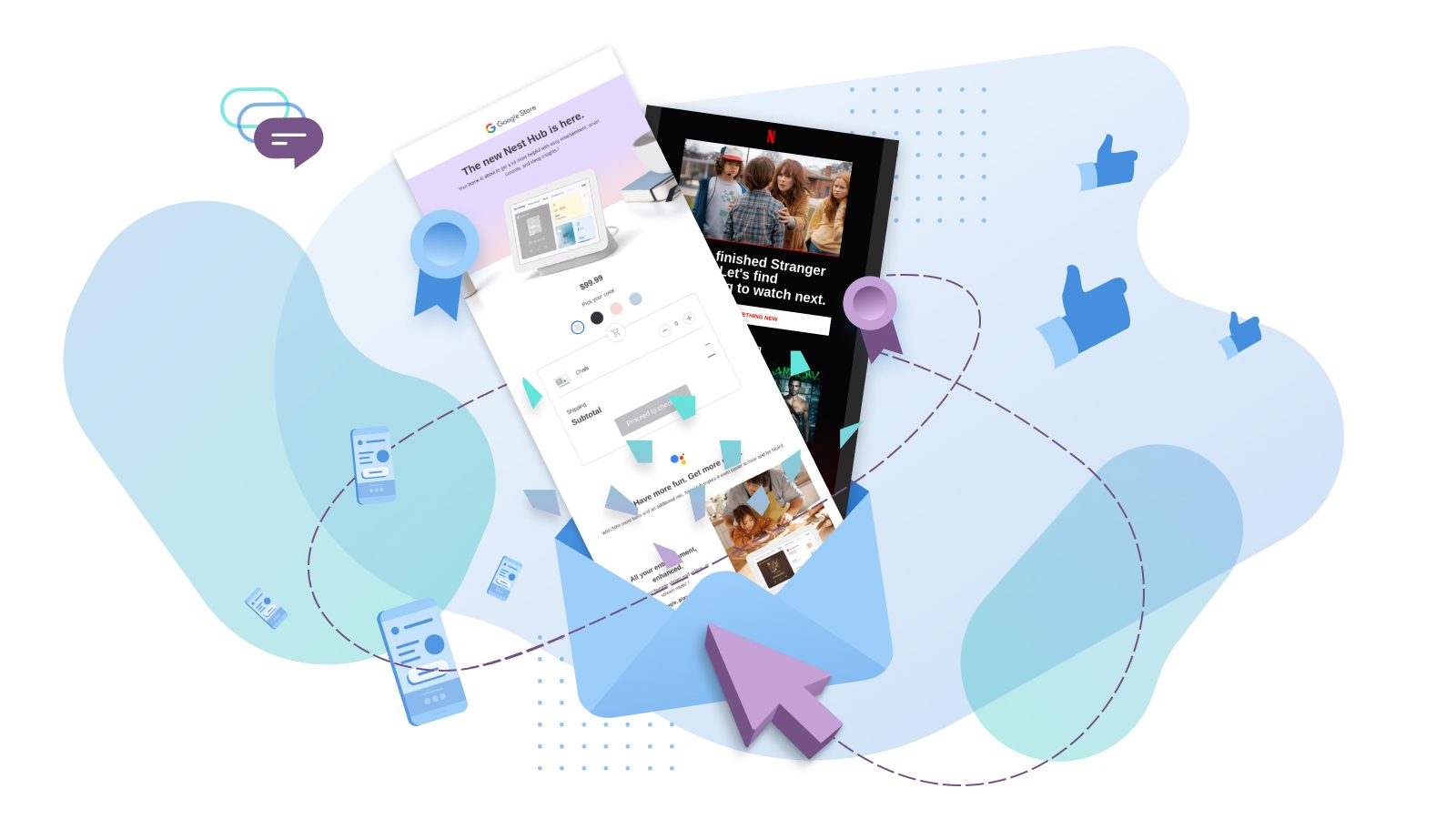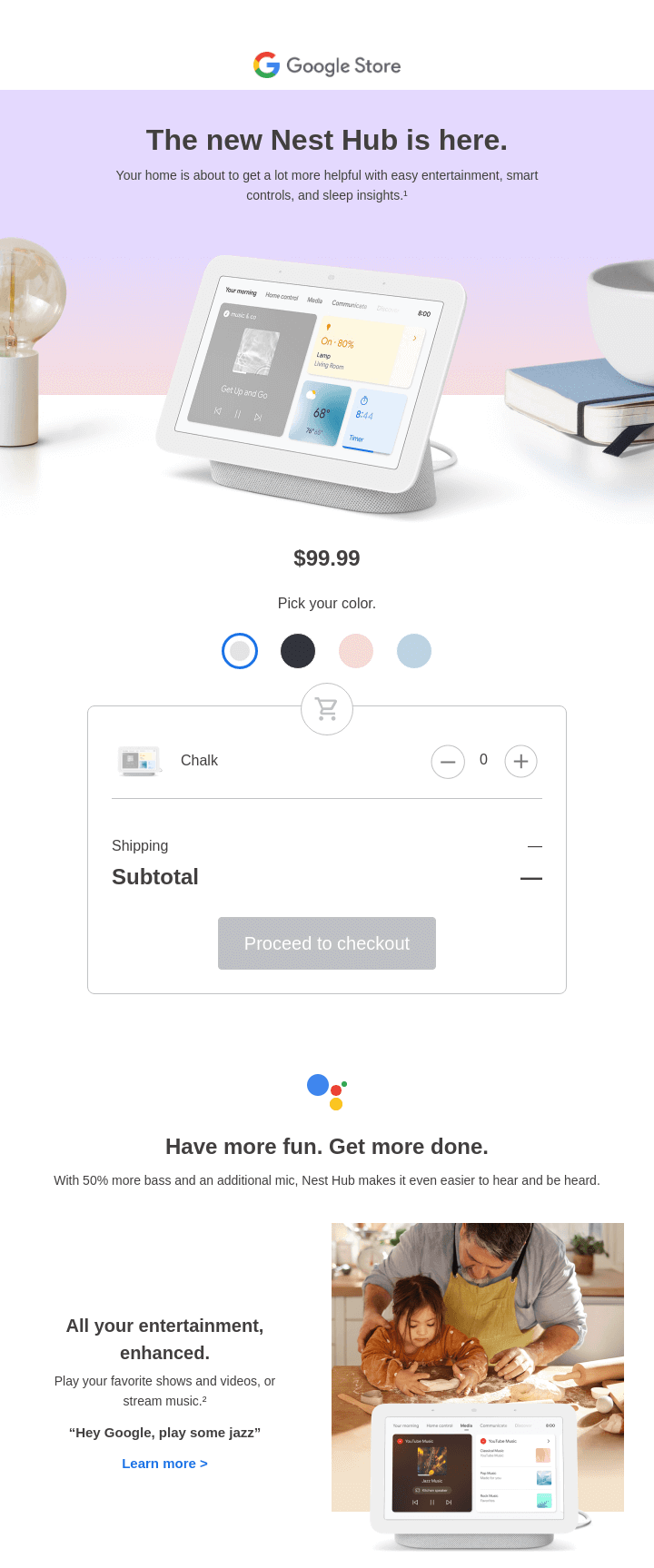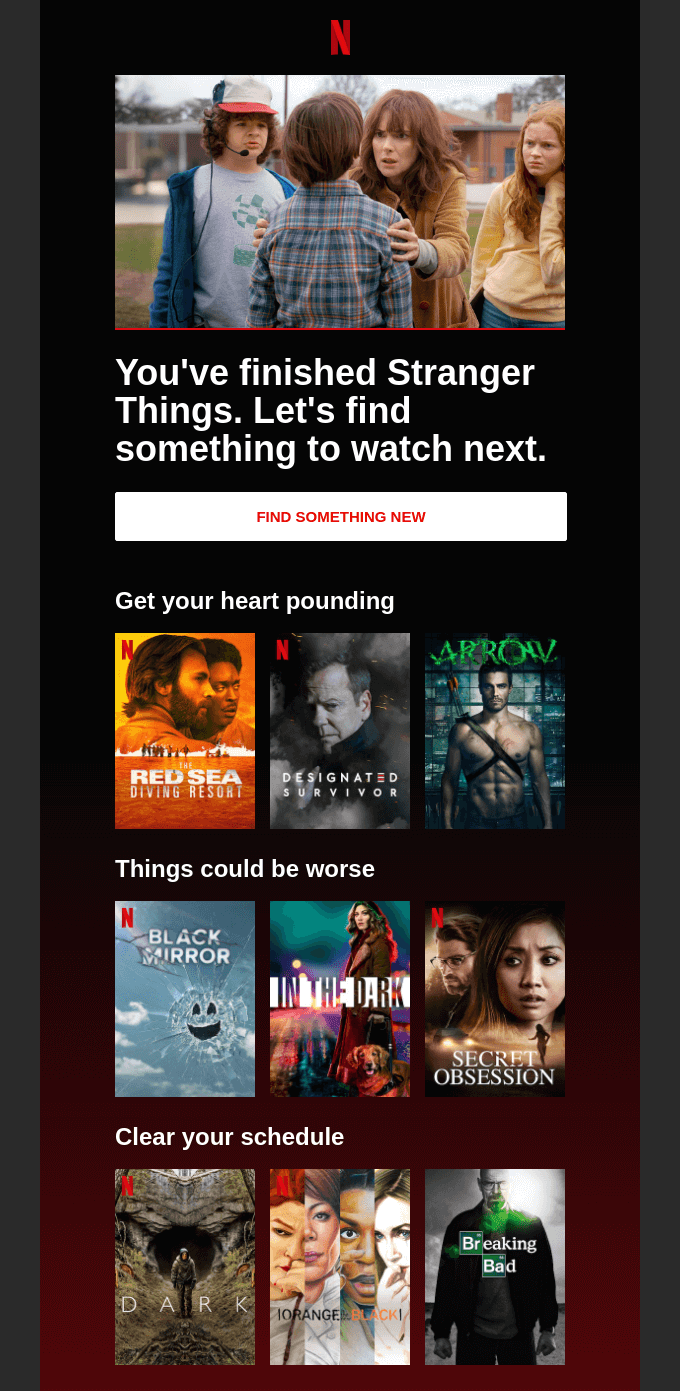Ever wonder if email is still a worthwhile part of your customer relationship management strategy?
After all, new CRM solutions and strategies emerge every day. Mobile push notifications, SMS, insert-more-buzzwords-here, are all exciting techniques. Nonetheless, the answer to the email question is a resounding yes.
In this article, I’ll lay out why email is the best channel for building customer relationships (backed by stats, of course). I’ll also share some quick tips and examples to inspire and strengthen your CRM strategy. But first thing’s first…
What’s a Good Definition for Customer Relationships?
Hubspot defines customer relations as, “the ways that a company will engage with its customers to improve the customer experience.” They go on to say, “Customer relations aims to create a mutually beneficial relationship with the customer that extends beyond the initial purchase.”
In short, when you help your customers’ succeed, you succeed. It’s true, a great product may attract customers. But it’s great customer relationship management that will keep them — and keep your business afloat. (No pressure!)
So, Why is Email the Best Channel for Nurturing Customer Relationships?
I could give you a whole slew of reasons why email is the best channel for customer relationship management. But I’ve to whittle it down to just five:
1. Reach your customers where they want
A whopping 83% of consumers prefer to hear from brands via email. So go on, give the people what they want!
Not only is email the preferred medium for communications, the people on your list signed up to hear from you specifically. They’ve either purchased already or are interested in your product, service, or market.
And if you follow the golden rule of deliverability — the double opt-in — they’ve given you permission to email them… twice. You’d be hard-pressed to find a more willing audience, or a better method to reach them.
2. Reach your customers where they are
Ninety nine percent of your customer base uses email. OK, you got me, I made that stat up.
But there are over four billion daily email users, and this number is expected to climb to almost 4.6 billion by 2025. That’s over half of the world’s population. More than half when you take children out of the equation. With numbers like that, it’s pretty safe to assume your customers use email.
3. Nurture relationships with highly personalized experiences
When it comes to building customer relationships, getting personal is a good thing. And email gives you the ability to deliver highly personalized experiences.
By leveraging customer data, you can deliver dynamic content, like tailored recommendations, usage updates, and loyalty gifts. In other words, experiences designed to wow your customers, build trust, and cement brand preference. (More on this a little later on.)
4. Use a proven marketing channel to boost retention and ROI
How many times did you check your email today? 10 times? 20 times? 100 times? (Don’t worry, this is a judgement-free zone!)
The fact is, people use email regularly. Even though the inbox is a competitive place, email is consistently proven to foster engagement and generate an impressive ROI. That hasn’t changed. On the contrary, the numbers keep going up. No wonder 80% of retailers identify email as the number one tool for customer retention.
5. Do one thing exceptionally well
Get this: Four out of five marketers say they’d rather give up social media than email marketing. Surprised?
Although there’s always pressure to keep up with new marketing trends and tools (like mastering the latest TikTok routine), there’s something to be said for sticking with tried and true methods — and excelling at them. In other words, it’s better to do one thing really well, than ten things poorly.
Now that we’ve established email is an essential part of your customer relationship strategy, let’s look at how to strengthen your approach. Read on for four quick tips and tricks (with examples) to do just that.
4 Quick Tips to Help You Build Customer Relationships Via Email
1. Get interactive
One surefire way to increase email engagement and delight your customers? Try implementing interactivity with AMP for Email.
Our own research shows 60% of email recipients are likely to engage with an interactive email. And more than 50% of email recipients want to interact with content inside emails. Clearly, interactivity is wanted!
(Not familiar with AMP for Email? In brief, it’s an innovative tech that allows users to take action — like submitting a product review or making a purchase — right from an email. Check out our white paper on the topic for a more in-depth explanation.)
When it comes to customer relationships, there are all sorts of ways AMP emails can help. For example, you could empower your customers to manage their subscription preferences, right from the inbox. Or, you could send shipping notification emails that dynamically update when a user opens it up.
Here are a few more examples of how you could use AMP for Email:
- Forms — Embed forms for product reviews, event registrations, RSVPs, account creation confirmations, surveys, and demo requests, to name a few!
- Carousels and slideshows — Allow your readers to browse through live products or listings, like low stock sale items or real estate listings.
- Accordions — Incorporate a lot of content into an email, without the dreaded clutter, with expandable content. For example, you could feature real estate listings in various neighborhoods in the city — all while maintaining a clean, uncluttered layout.
Implementing interactivity doesn’t have to be complicated either. With Dyspatch, users get access to a library of pre-coded, interactive AMP modules that they can easily drag-and-drop into templates. No coding required.
Here’s an example of interactivity done right from the one and only Google.
It’s done right because:
- It’s engaging. Admit it, you’re just itching to check out all those colors.
- It’s easy. Customers can take action (in this case, selecting the product and heading to checkout) right from the email — no need to click around and risk them getting distracted.
- It’s clean. Instead of including pictures of all four product colors in the email, Google opted for a sleek, AMP-powered solution.
2. Get personal
Everyone appreciates a personal touch, and the recipients of your emails are no exception. How much do they appreciate it? Glad you asked! Let’s turn to some stats.
Ninety-one percent of customers prefer when brands offer tailored recommendations and content in their emails. And almost three-fourths of marketers say personalization in email increases engagement.
So, what can be done to take personalization beyond first name? (Although you should most definitely incorporate this tactic into your strategy, too.) The first step is to build robust customer profiles.
Then, you’ll want to segment your email list, so you can send out more relevant messages across the board. Think about segmenting by demographics, purchase history, geographic location, or customer status. Ask yourself: Are your email recipients frequent buyers, prospective customers, or one-time customers? And how should that affect your messaging?
If you want to get really fancy (read: marketing-savvy), you could even drill down and segment by personal interests.
Some other effective personalization strategies include:
- Personalizing subject lines based on specific buyer criteria.
- Opting for a “From” line with a person’s name instead of a company name.
- Showing customers suggested items based on purchase history or interests.
- Referencing a recent purchase or interaction to lead customers back to your site.
Pro tip: Personalize the content and offers presented in digital receipts and shipping confirmations based on both the customer’s purchase history and their loyalty status.
Netflix hits the personalization nail right on the head with this email.
Here’s what makes it great:
It’s highly personal. Admittedly, almost too personal right? It’s like Netflix is right there with you, in your living room.
It’s relevant. They offer a curated set of entertainment picks based on what you watched last and even what kind of mood you’re in.
It encourages loyalty. The reader of this email will likely spot at least one thing they want to add to their Netflix watch-next list, hence ensuring they remain a loyal subscriber. Heck, I’m even making note of a few I want to watch.
3. Make every touchpoint count
When it comes to customer relationships, there’s a whole category of emails that are often overlooked: Transactional and automated messages.
Though not as flashy as marketing emails, these messages play a crucial role in the overall customer experience. A welcome email that’s right on point can start your relationship on the right foot. And statistically speaking, customers who open a welcome email read 40% more content over the next 180 days. On the flip side, one that comes too late (or not at all) can leave your subscribers with a poor impression.
This is just one example. But the moral of the story is, tend to your transactional email strategy. Revisit these emails at least once a year, and measure and optimize different templates.
Plus, check out the list below to ensure you have the majority (if not all!) of these emails in place.
Common types of transactional and automated emails include:
- Welcome emails
- Confirmation emails
- Order updates
- Shipping notifications
- Onboarding sequences
- Loyalty program emails
- RSVP and reminder emails
- NPS and survey emails
- Product review requests
- Cart abandonment emails
- Customer retention emails (e.g. Special offers to let your customers know you’re thinking of them on their birthday or anniversary.)
You’ll also want to consider if it’s time to update these integral communication pieces with a fresh new look, snappy copy, or perhaps even some interactive AMP flair.
4. Make it local
If you serve multiple locales, consider tailoring content to each one.
By taking the time to communicate with your customers in their language and context, you’re showing them you care. Simply put, when you invest in localization, you’re investing in a superior customer experience.
Not to mention, serving culturally relevant content can help boost your email engagement.
At the end of the day, localization builds trust with your audience — a fundamental component of customer relationship management.
More benefits of email localization include:
- Higher customer lifetime value (CLV)
- Improved return on investment (ROI)
- A greater global presence
- A competitive advantage
And not to brag, but localization is something Dyspatch does really well. You can create and manage all your localized templates right in one place — and get to market up to 250% faster.
The Bottom Line: Email Can Help You Retain More Customers
Email is an indispensable tool for building (and keeping) customer relationships. Full stop.
So now is not the time to scale down your email efforts. Instead, plan to up the ante and refine your email strategy with proven techniques.
If you need some inspiration, refer to our tips above and remember to:
- Get interactive.
- Get personal.
- Make every touchpoint count.
- And make it local.
Want to talk email strategy for customer retention? Request a demo to see how Dyspatch can help you delight, engage, and retain more customers.


